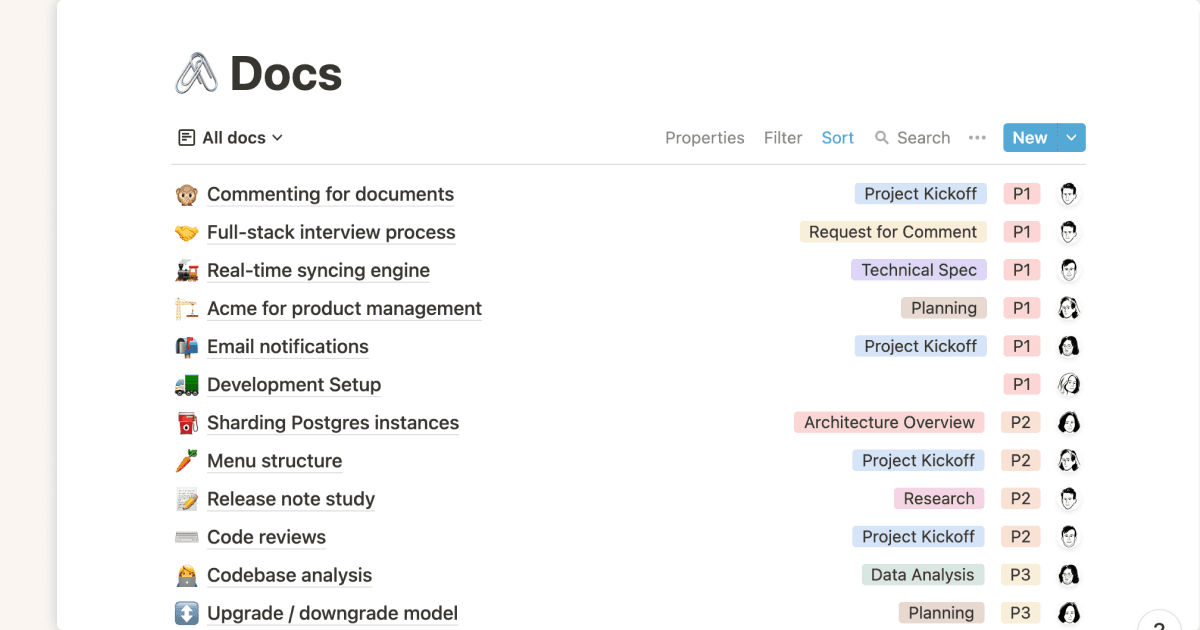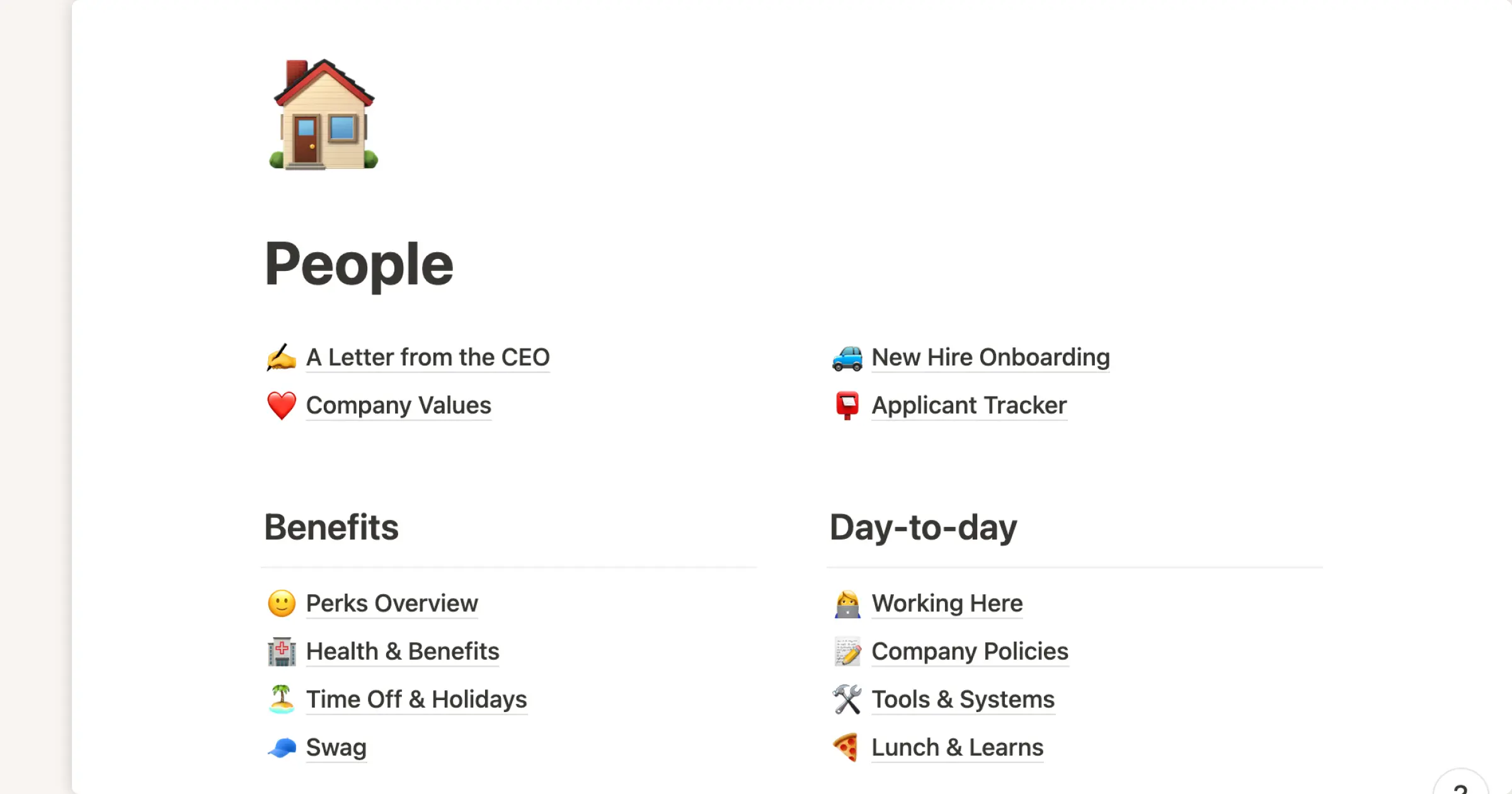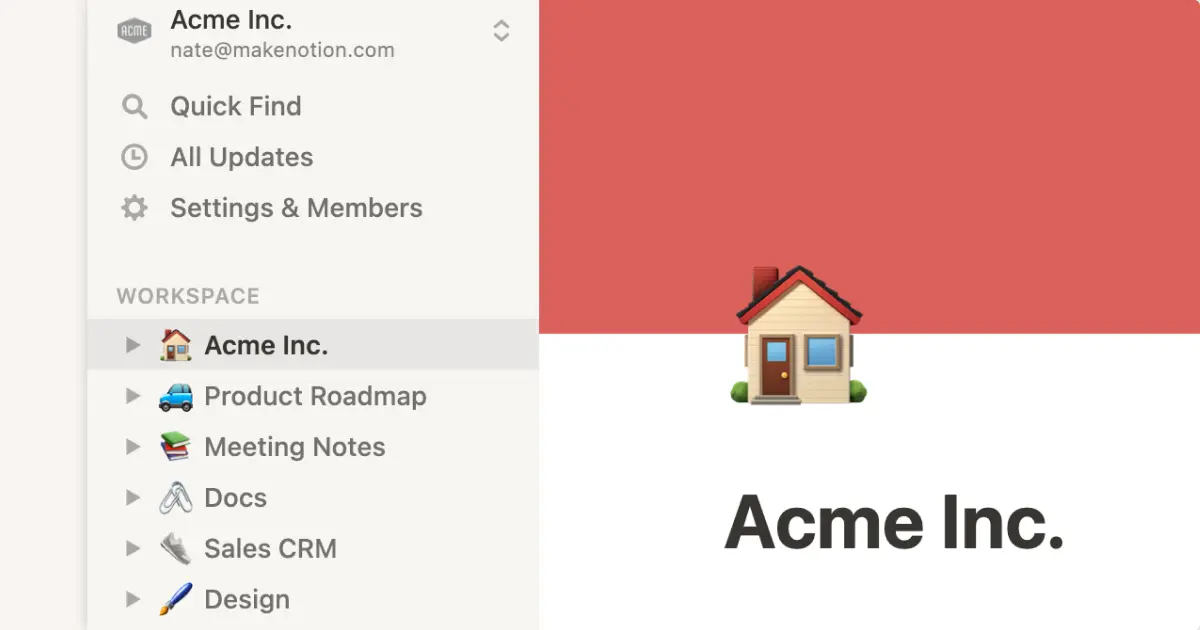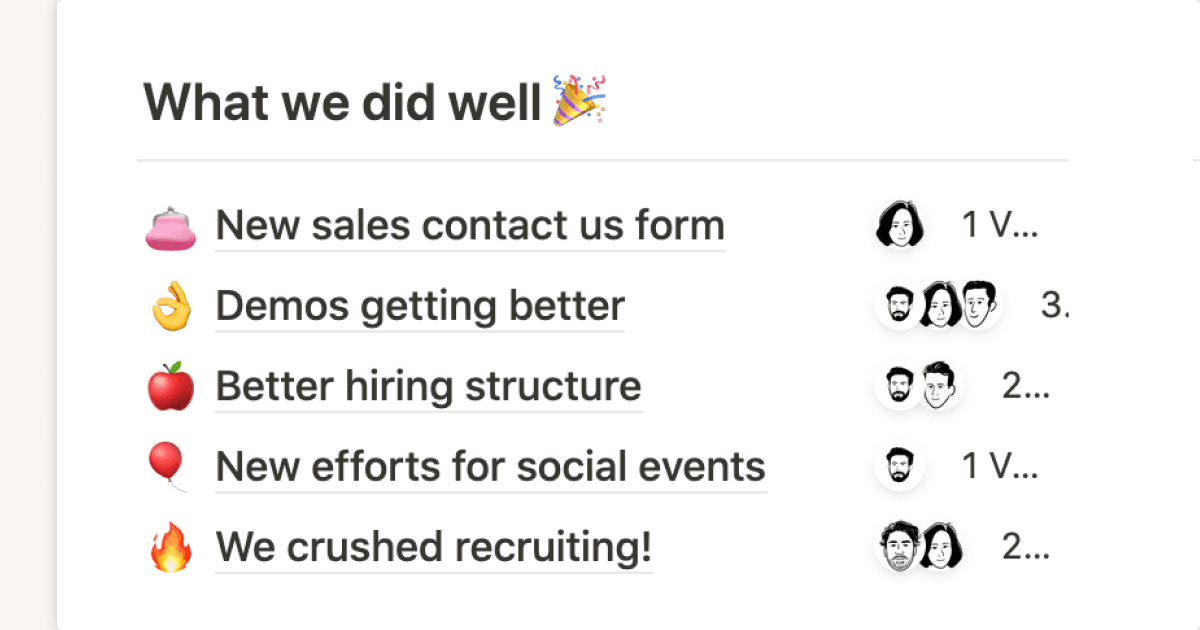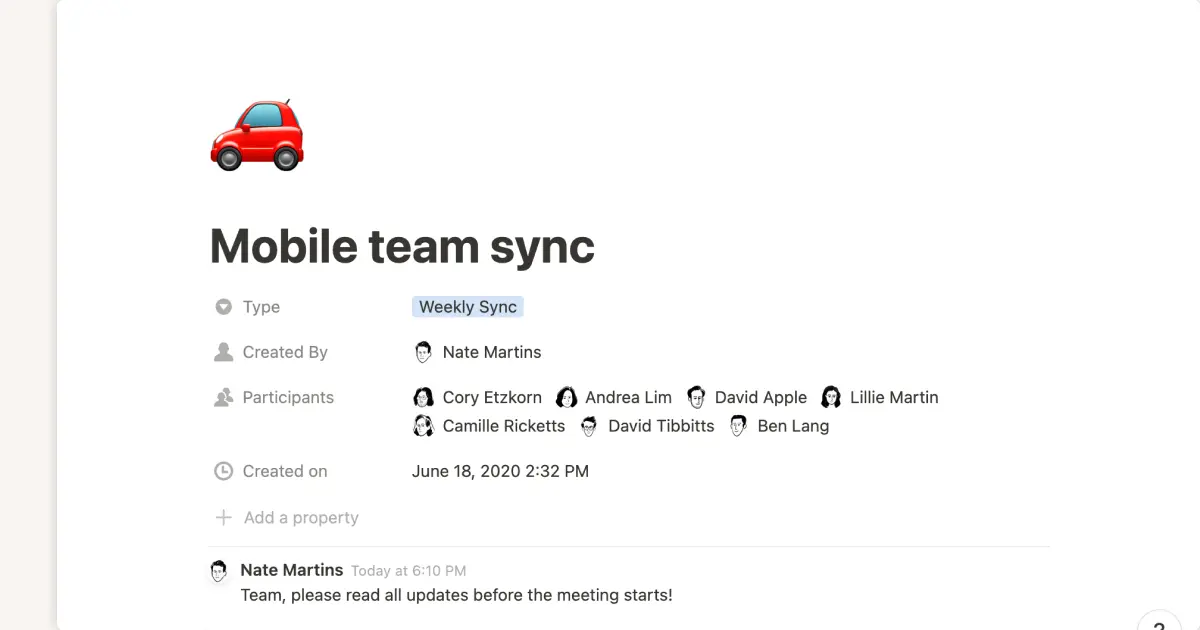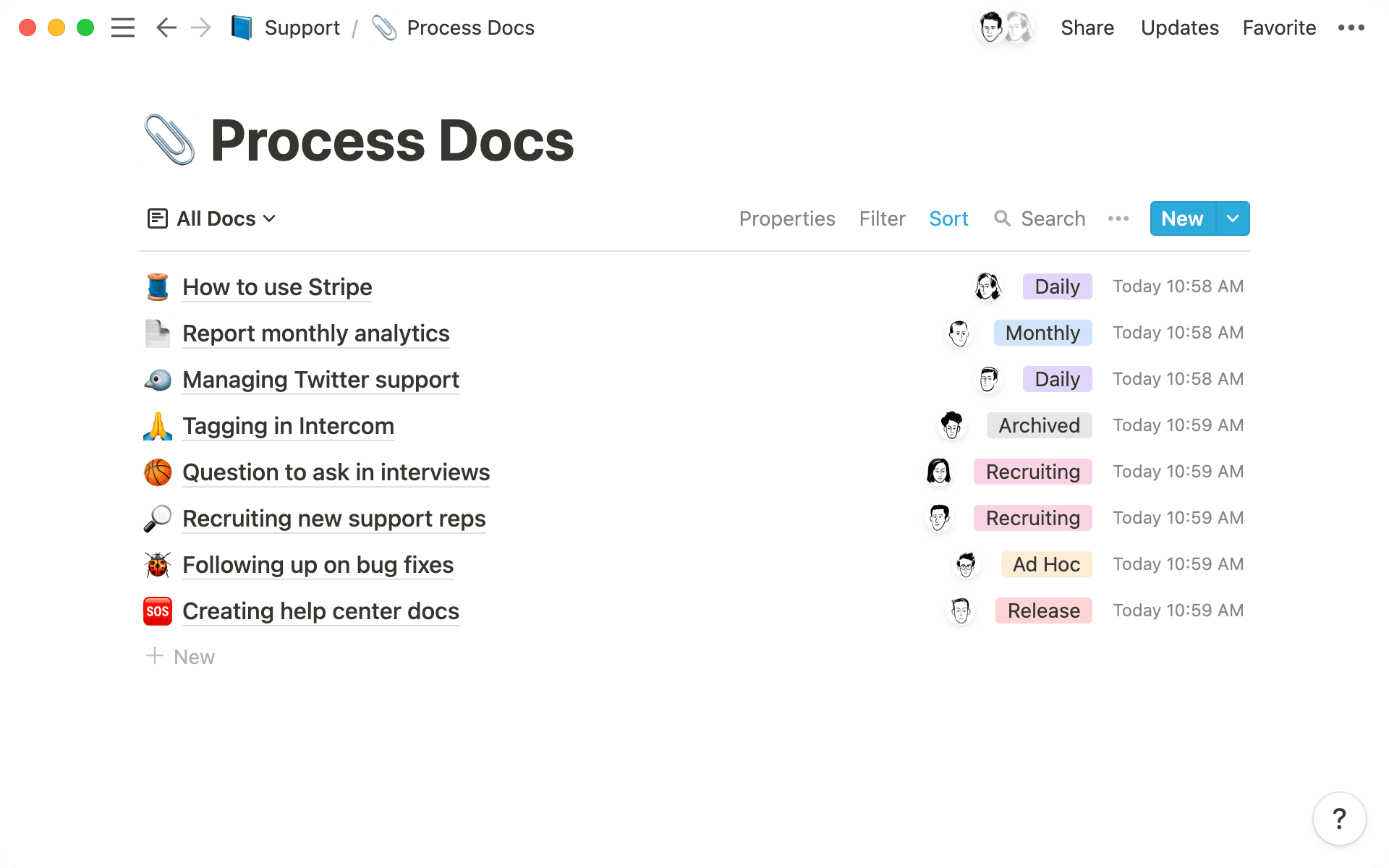
In startups, most decisions are made without a huge runway: “Let’s hire a new support person, then figure out exactly what they’ll be doing.”
Or maybe: “Let’s get a subscription to this software, then integrate it into our business to make it more efficient.”
Even something like: “Let’s move Sonja from marketing to work more on partnerships; we can cover for her duties in the meantime.”
While it’s admirable that startups can be so agile without needing to contend with the unwieldy politics and processes of larger companies, enough of these snap decisions can pile up and wreak havoc on your startup’s knowledge transfer in the long run.
Sharing context and past learnings in the realm of startups is often completely glossed over in favor of more pressing tasks: recruitment, determining product-market fit, or go-to-market strategy. But to stay adaptive while allowing for sustainable growth, startups must internalize the importance of knowledge transfer and how to incorporate it into your day-to-day.
What knowledge transfer is (and isn’t)
Knowledge transfer is the act of capturing and sharing critical information across the company, for new and old employees alike, and doing so proactively. It’s especially imperative for early-stage startups, which lose crucial operations information every time an employee changes roles or leaves the company.
What is knowledge transfer? Let’s quickly clarify what knowledge transfer is and isn’t.

Knowledge transfer is collecting and dispersing of critical knowledge to all team members, both applicable for new hires and current hires changing roles. It’s essential to document organizational knowledge for A) the well-being of the company and B) the role’s successor when an employee leaves. Knowledge transfer should be an ongoing effort and a purposeful system.

Knowledge transfer isn’t only succession planning — it should always have the company’s future in mind, not just haphazardly patching over knowledge to the next employee. Similarly, it’s not considered a synonym for training for new employees. It should be helpful to employees old and new and should not have an “endpoint.” As knowledge transfer is more future-minded, it should not only be completed in the last two weeks of an outgoing employee’s tenure or trend ad-hoc in nature. That proves too risky to rely on someone to build systems with one foot out the door. Nor should information transfer be a simple top-down mandate from leadership. Employees should understand the “why” and buy in to why the knowledge is invaluable to the whole startup.
Knowledge transfer is, really, about extending the learnings and capabilities of your team — now and for the future. When vital company information lives in the head of one or just a few people at a startup, how does that help you scale?
How to systematize knowledge transfers in your startup
Growing a startup goes far beyond recruiting new employees or simply adding more heads to the organization chart. Effective and systematized knowledge transfer is essential to get right at any stage in a startup, and best yet if implemented early in the startup’s lifecycle.
You don’t need us to tell you that startups are notorious for quick employee turnover: they lose one in four employees in a given year. This reason alone is urgency enough to put systems in place to preserve organizational knowledge and better facilitate knowledge transfer.

Beyond that, it behooves startups to set up processes that will serve the whole lifecycle of the company to help it scale, versus shooting from the hip and calling it “staying agile.” New employees, especially new hungry startup hires, appreciate digging into documentation and learning about the history of decisions made. Formalizing this as a system will facilitate the startup’s growth, and prevent painful knowledge lapses as employees inevitably turnover.
1. Communicate expectations or goals around documentation
Being explicit about expectations and goals from the get-go can bring existing team members up to speed on the changes in policy while simultaneously initiating new hires into the fold.
An example of this is requiring the creation of “handbooks” or “guides” prior to a new team member joining. Ideally, each department will have its own, like in their team’s wiki — a handbook, a collection of step-by-step processes, or frequently asked questions applicable to the job and the company at large.
What should this handbook or guide include?
Step-by-step processes of day-to-day tasks, ideally with screenshots or context-setting visuals (even better with videos).
Frequently asked questions (and answers to them).
Necessary background reading lists, like blog posts on company ideology or mission statements.
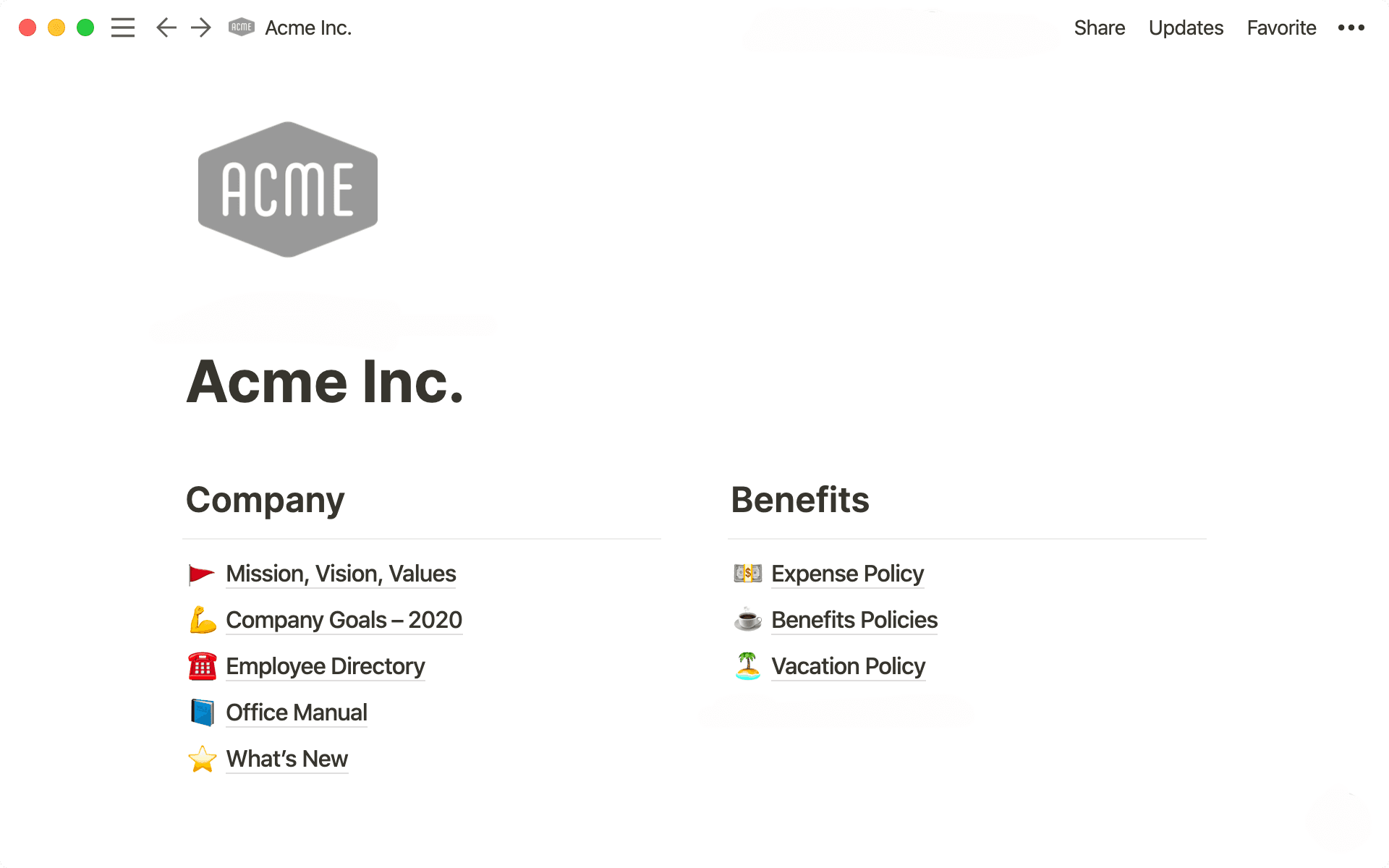
While employees may initially grumble about needing to document so thoroughly, understanding the overall importance of documentation to the health and scalability of the startup will prove crucial to getting their buy-in to the cause.
2. Determine what knowledge needs collecting
As you roll out the onboarding process for new employees (check out this onboarding checklist for starters) with the help of handbooks, identify opportunities to bolster your documentation or address gaps that exist. Tapping the entire team, old and new, can assist with this and may require a full-team sprint of one to two weeks to complete the initial build of the company wiki as a stopgap. It will be worth the team’s investment in the long run.
Obviously, older team members and founding members of the startup have a lot of tribal knowledge to contribute, but don’t overlook opportunities to mine the objective eyes of newer employees, too. They’ve freshly completed the onboarding process, and because of that recency, their opinions on what could have been improved about their onboarding is top-of-mind.
To build robust knowledge transfers, consider the following starter questions and pose them to the team:
What knowledge did you wish you had when you originally onboarded?
What has changed about this role/department during your tenure that is relevant to detail to new hires?
What aspects of the job were still unclear after onboarding?
What step-by-steps are in place for this job, and how were they decided on originally?
What essential stories/tools of the trade need to be written down that were helpful in your role and would help others?
After this, divvy up the documentation tasks among the team, set clear deadlines, and build up the archive.
3. Stress-test the knowledge transfer documentation
After the initial archive is built in a team sprint, test the documentation with new hires coming on or instruct different departments to gut-check each other’s work. A digital tool that enables easy commenting and editing is the ideal springboard to facilitate team collaboration and deftly accommodate these changes.
To really make sure new team members can jump in on documentation and not miss a beat, consider tapping objective parties like family members or trusted advisors to weigh in on the parts of the “tribal knowledge” that aren’t apparent in this iteration. Is the format helpful? What would help with the absorption of ideas and concepts? Underline the importance of honest feedback at every stage to make the knowledge transfer as effective as it possibly can be. It might even be helpful to the team to call it “a working document” or a “living, breathing resource.”
Plus, having this living document encourages it to be updated with new information. This fosters transparency and team buy-in, truly making knowledge transfer a company-wide effort.
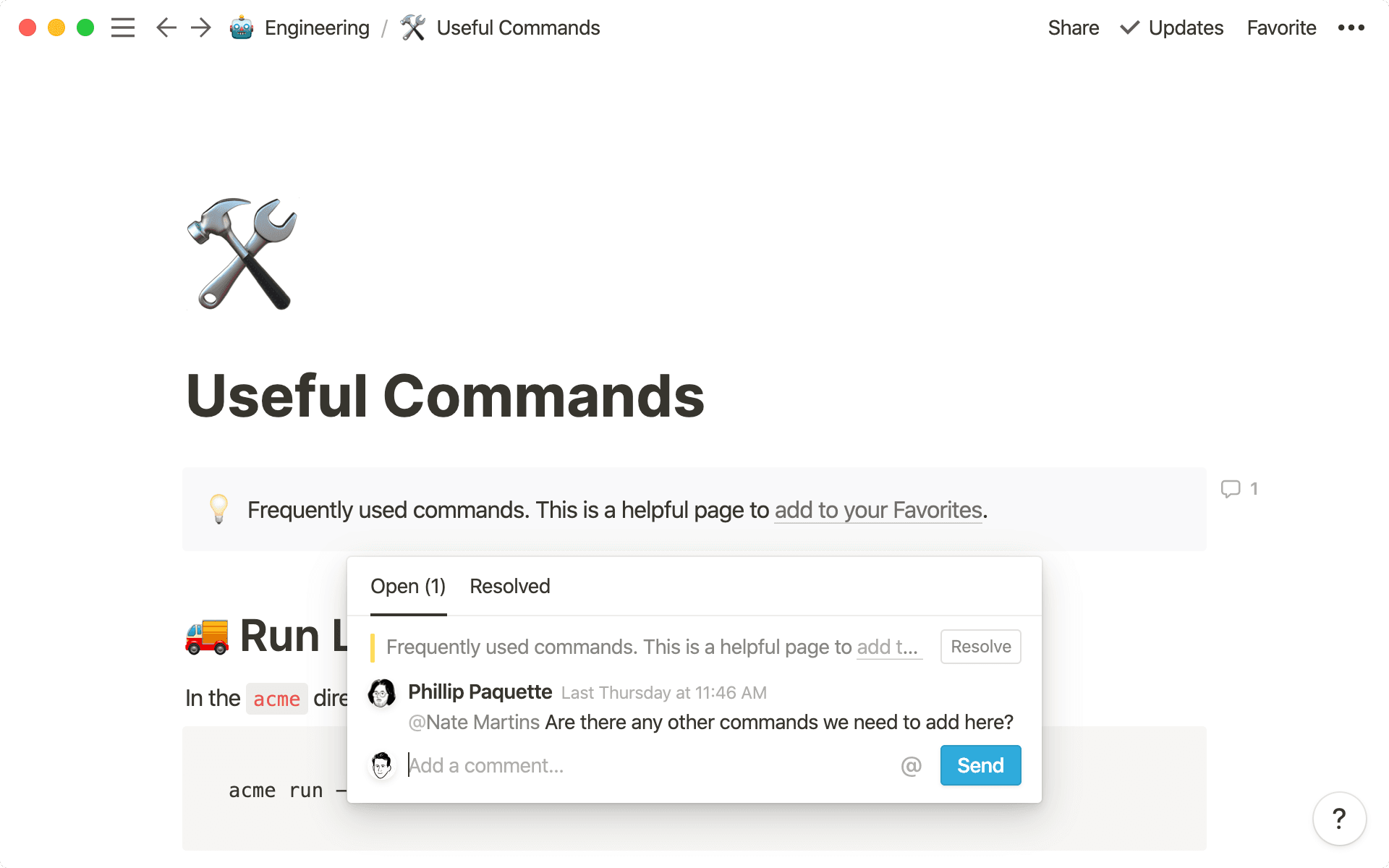
4. Share, rinse, and repeat
Without sharing the centralized knowledge resource you’ve curated, you undermine all the work your team has done and limit collaboration to improve it over time. If you create something and no one knows it exists, does it really exist at all? Probably not! Share this work liberally to make sure it’s part of your team’s fabric.
Explicitly refer team members to the company wiki tirelessly. Encourage the creation of a page that is suggested in a meeting —“Carl, why don’t you take 30 minutes to create that page today?”

Being communicative about expecting team members to maintain the documentation will keep your expectations and goals accessible and achievable for all involved.
Another suggestion is to require (in the absence of other tasks or in between projects) that team members return to documentation and make updates. It can be the priority running in everyone’s heads at all times (in a good way).
Seek feedback from the team in ongoing ways, too. A common way is through a post-onboarding survey, specifically soliciting from new folks the gaps that existed in their onboarding. This extends the shelf-life of knowledge transfer over time while scaling and improving it continuously.
Implement a tactile space for knowledge transfer using Notion
All of this systematizing is well and good, but if it’s not clear to the team where this knowledge lives and is curated, this holistic approach will flop.
A tool to facilitate knowledge transfer and serve as a tactile workspace for team collaboration and a single source of truth is a necessary prerequisite to success.
Documentation takes time out of any day-to-day job, and to ensure seamless knowledge transfers in the future, acknowledge that employees need ample time to update documentation and incentives to keep the information relevant.
Notion serves as an escape from tool overload, bringing together all your team’s documents, project management, and wiki into a single tab for all pertinent information. Between startups and enterprises alike, teams of 20 to 20,000, Notion’s customizability and ease of use set us apart.
To get your startup going, try these free Notion templates to help build your documentation and transfer knowledge between teammates:

